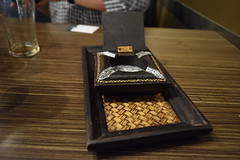
- Click Here To Find Out More About:
- Premier Box Site
Behind the Scenes Making Plastic Containers with Manufacturing Processes Like Blow Molding
by
Fred Stark
I will discuss each of these so you can see the what value texture can have on your next project.
Just about the most cited reasons for texture may be to provide grip. Texture is normally used to provide more grip especially on tools together with controls. Smooth plastic may be slippery, particularly when wet. Texture can create edges where the grip will be more positive. Texture can also serve as a visual communication tool. As a result of placing texture in certain areas you can tell the user where the part is meant to be grasped. Consistency can complement larger features which include nubs and serrations.
Texture tends to break up light and reduce shine. Pc application, some parts should have a matte look. Putting texture for a surface breaks it up the surface which scatters light reflected. Good quality texture makes parts look professional and less like cheap plastic.
When working with glass or other filler in plastic, texture enables you to hide the for filler injections from being seen on the surface. In certain parts it is undesirable for any filler in the plastic to return to the surface area. In many cases this can be mitigated using the correct process or by using less filler. When this is not the case, texture can help by allowing the glass to flow to the surface only with small areas that happens to be camouflaged by your texture.
Sometimes using ribs ends in sink marks appearing on the exterior which detract from the products the product. Particularly when a part is designed with thick ribs, texture can hide this resulting sink grades. By splitting up the surface, that divot formed through the sinking of this material is a smaller amount noticeable.
Another reason to use texture is to cover parting lines. With smooth surfaces, parting lines show up easily because these people break the in any other case smooth surface. With texture, that parting line is easier to hide because this doesn\’t stand out as much. In some cases, parting lines look like cracks which the shopper could mistake for a broken part. Most manufacture find ways to check the customers complete make that types of mistake.
Among the more artistic uses associated with texture makes the plastic appear to be wood, natural leather or other product. Such a texture is really desirable when wanting to cut costs by making less affordable parts out with plastic. While texture may well not hide everything, good texture may very well be enough to are similar to the original product. Even if it is recognizable as cheap, several customers will appreciated that this doesn\’t look like every other plastic part out there.
To preserve the look of your product or service, texture can hide
minor damage. With items that might scratch or drop, texture can help cover up insignificant imperfections. This will keep the product looking new longer and improve the reputation of your handmade jewelry.
Now that we have discussed what texture is used for, let s look at how texture is manufactured.
Miss Serafini has been an authority in the
Plastic Injection Molding
business since her Mother left her a small
blow molding
business in Palo Alto. She is an industry expert
Article Source:
ArticleRich.com